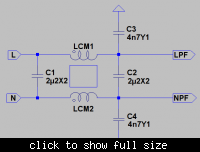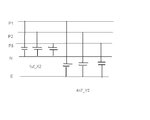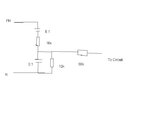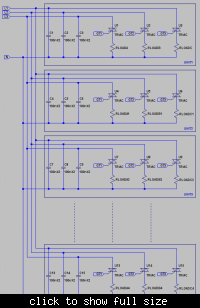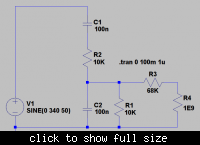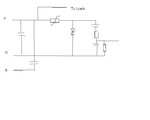userx2
Full Member level 3
Hello
I am a design engineer and I have a problem with X2 as well as Y2 film capacitors failing in one of my products.
This is a 3 phase application and the capacitors are connected from from each phase to neutral (X2) and from each phase to earth (Y2).
There are also other X2 capacitors used in the circuit, some on a filter application with series resistors.
The unit itself does triac switching (dimming).
Long story short, the capacitors fail after about 6 month in the field. The capacitance decreases to almost nothing. a 100nF capacitor will maybe have 2.2nF left when it get back here.
The same happens with the Y2 caps.
I have disected some of the capacitors and found that the silver foil inside them has gone transparant, compared to a new unused one.
One explanation is that they are sitting there, experiencing billions of transients and self healing billions of times until there is nothing left of the foil.
Fair enough but after exhaustive tries and testing, I have not been able to measure any such transients here in the lab and these units are shipped to all different parts of the country. What is worse, is that the Y2 caps do the same thing and they are much more resilient than X2s.
These are asian capacitors as we ar enot able to get others dues to long lead times of 50+ weeks (!!)
Has anyone in the professional world of power electronics out there experienced similar problems and what was the cause / remedy?
Any help / ideas will be greatly appreciated!
Kind regards
I am a design engineer and I have a problem with X2 as well as Y2 film capacitors failing in one of my products.
This is a 3 phase application and the capacitors are connected from from each phase to neutral (X2) and from each phase to earth (Y2).
There are also other X2 capacitors used in the circuit, some on a filter application with series resistors.
The unit itself does triac switching (dimming).
Long story short, the capacitors fail after about 6 month in the field. The capacitance decreases to almost nothing. a 100nF capacitor will maybe have 2.2nF left when it get back here.
The same happens with the Y2 caps.
I have disected some of the capacitors and found that the silver foil inside them has gone transparant, compared to a new unused one.
One explanation is that they are sitting there, experiencing billions of transients and self healing billions of times until there is nothing left of the foil.
Fair enough but after exhaustive tries and testing, I have not been able to measure any such transients here in the lab and these units are shipped to all different parts of the country. What is worse, is that the Y2 caps do the same thing and they are much more resilient than X2s.
These are asian capacitors as we ar enot able to get others dues to long lead times of 50+ weeks (!!)
Has anyone in the professional world of power electronics out there experienced similar problems and what was the cause / remedy?
Any help / ideas will be greatly appreciated!
Kind regards
